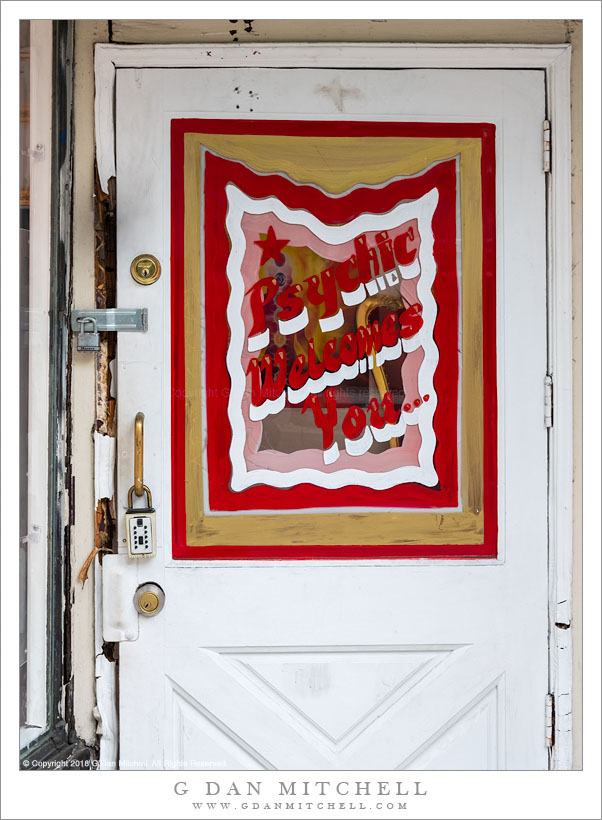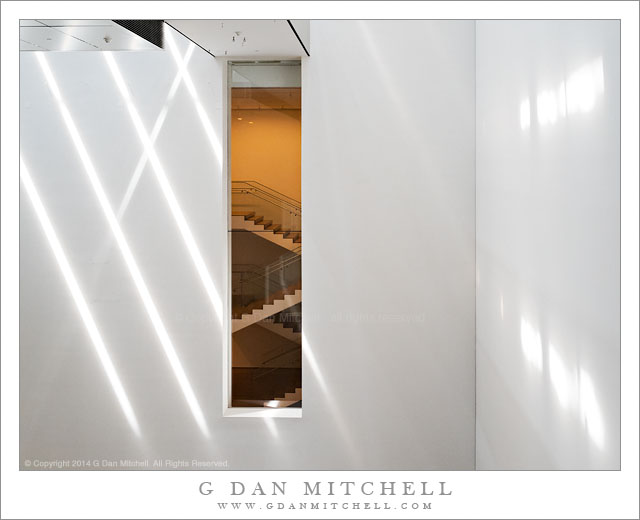
Psychic Welcomes You. © Copyright 2018 G Dan Mitchell – all rights reserved.
A business doorway with many locks and a surprising message.
Another photograph from the San Francisco streets today… Because I live only a one-hour train ride away from San Francisco, it is pretty easy for me to head up there, traveling light with a rangefinder-style camera and a lens or two, and head out on foot to photograph in the City. I did just that near the start of the month, perhaps partly to focus on a subject other than the natural world of Yosemite for a bit!
A little scene like this one can be a simple photograph of a door with an interesting sign, or it could lead you to other observations and questions if you let it. It is, obviously, another example of something I described in another recent street photography post, namely the interesting hand-made business sign that is the opposite of the mass-produced “perfect” signage that we often see. There’s something that is both a bit comic and a bit bizarre about the appearance of the sign and its “Psychic Welcomes You” message. Also, “Psychic” must be having a premonition about a robbery, given the number and variety of locks along the left side of the door! Or perhaps a premonition isn’t necessary — note the previously broken door frame. That, of course, produces another question: What would be so attractive about a psychic that he/she would be the repeated target of burglaries?
See top of this page for Articles, Sales and Licensing, my Sierra Nevada Fall Color book, Contact Information and more.
 G Dan Mitchell is a California photographer and visual opportunist. His book, “California’s Fall Color: A Photographer’s Guide to Autumn in the Sierra” is available from Heyday Books and Amazon.
G Dan Mitchell is a California photographer and visual opportunist. His book, “California’s Fall Color: A Photographer’s Guide to Autumn in the Sierra” is available from Heyday Books and Amazon.
Blog | About | Flickr | Twitter | Facebook | LinkedIn | Email
All media © Copyright G Dan Mitchell and others as indicated. Any use requires advance permission from G Dan Mitchell.



